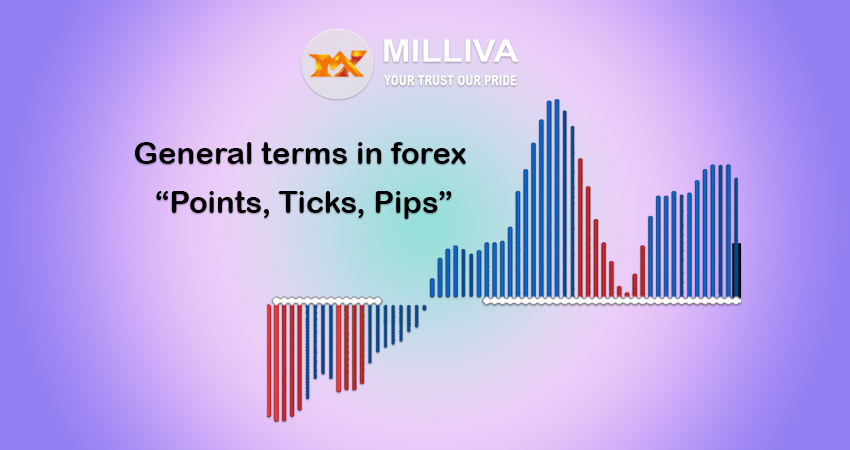Understanding the general terms in forex “Points, Ticks, Pips”

![]()
A movement in asset prices measured in points, ticks, and pips. The use of these phrases determined by the market in issue and the magnitude of the price movement. Let’s have a look at what each of these phrases means and when they should be used.
Terms of Trade
Points
Futures trading referred to as “points.” The smallest price increment adjustment on the left side of the decimal point is one point. The price of S&P 500 E-Mini (ES) futures, for example, may shift from 1314.00 to 1315.00, a one-point difference. One point gained if Crude Oil (CL) goes from 68.00 to 69.00.
Each point of the movement has a monetary value, however, the actual amount changes depending on the transaction. On the Chicago Mercantile Exchange (CME), for example, each point of fluctuation in crude oil is worth $1,000.
Ticks
When looking at the price of a futures contract. A point is made up of ticks, which are the price fluctuations that occur on the right side of the decimal. A tick is the smallest price movement that markets can measure. Tick sizes vary per market, and the value of each tick changes each futures contract.
The tick size for gold futures (GC) is 0.10.1. The tick size of the S& P 500 E-Mini is 0.25, while crude oil is 0.01.23. The number of tick requires to increment the point is determined by the size of the tick. There are four ticks to a point in the S&P 500 E-mini because each tick is worth 0.25.
There are 10 ticks to a point in gold futures, where the tick size is 0.10. Because ticks are fractions of a point, their dollar value (or “tick value”) determined by the futures contract. The tick value for crude oil on the CME is $10, with each point costing $1,000.
The tick value for the S& P 500 E-mini is $12.50, making each point worth $50.4. To get the tick value for other futures, go to the CME Group website, identify the contract, click on it, and then go to the “Contract Specs” tab.

Pips
A pip is a unit of measurement for the price movement of a currency pair. Each time the fourth decimal place of the price moves by one, called as pip. Except for those including the Japanese yen, it applies to all currency pairings (JPY). 5 For example, a one-pip shift in the EUR/USD currency pair from 1.1608 to 1.1609 is one pip.
One pip of movement happens at the second decimal point for forex pairings that include the JPY. It takes one pip for the USD/JPY to shift from 109.16 to 109.15.
Forex brokers now provide fractional pip pricing, which implies that prices are frequently report to the fifth decimal point. One pip is equal to a change in the EUR/USD price from 1.08085 to 1.08095. If the price moves half a pip from 1.08085 to 1.08090, it has only moved a quarter of a pip. A complete pip made up of ten fractional pips.
The “pip value,” or how much money a pip of movement is worth, determined by the currency pair traded. The value of each pip fixed at $10 for every $100,000 transacted in pairings where the USD mentioned second. Such as the GBP/USD. The pip value changes for pairs when the USD is not listed second or if the trader is not utilizing a USD account.

Visit us : www.milliva.com





